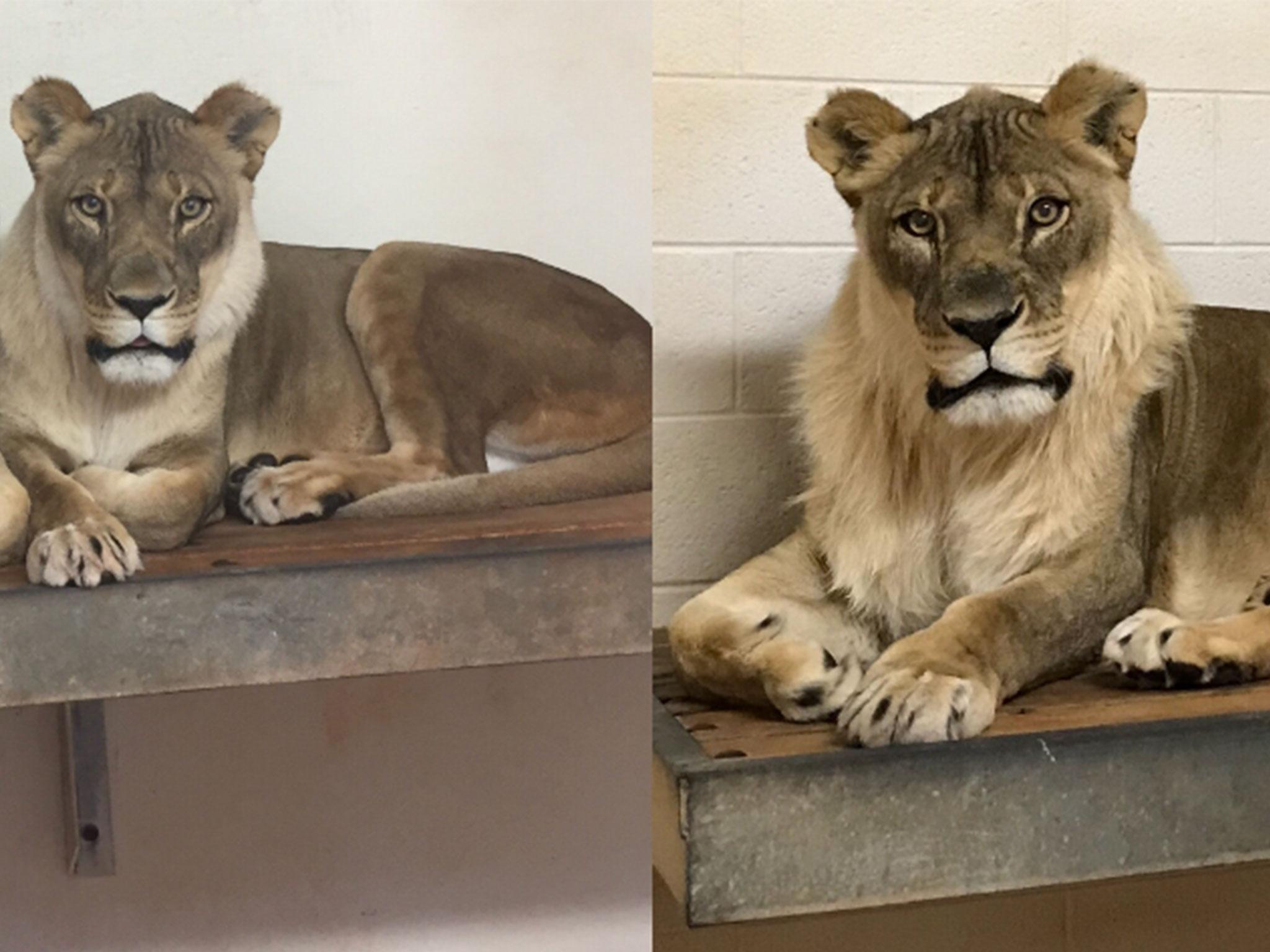Scientists baffled after female lion mysteriously sprouts mane at US zoo
'After a while, it became obvious to everybody that Bridget was developing something a little different,' veterinarian says

Your support helps us to tell the story
From reproductive rights to climate change to Big Tech, The Independent is on the ground when the story is developing. Whether it's investigating the financials of Elon Musk's pro-Trump PAC or producing our latest documentary, 'The A Word', which shines a light on the American women fighting for reproductive rights, we know how important it is to parse out the facts from the messaging.
At such a critical moment in US history, we need reporters on the ground. Your donation allows us to keep sending journalists to speak to both sides of the story.
The Independent is trusted by Americans across the entire political spectrum. And unlike many other quality news outlets, we choose not to lock Americans out of our reporting and analysis with paywalls. We believe quality journalism should be available to everyone, paid for by those who can afford it.
Your support makes all the difference.Veterinarians have been left baffled after a female lion suddenly sprouted a mane at an American zoo.
Bridget, an 18-year-old African lioness living at Oklahoma City Zoo began to develop the usually-masculine trait in March last year.
The cause of the shaggy growth around the lion’s jaw is so far unexplained, although zoo staff said they were analysing blood samples in an attempt to solve the mystery.
"After a while, it became obvious to everybody that Bridget was developing something a little different," Gretchen Cole, an associate veterinarian at the zoo told ABC News.
"Changes when a female develops characteristics of a male are unusual.
"It's only the outward appearance of the mane that has changed. We are trying to solve the puzzle."
Manes generally develop in male lions at around the age of one due to a heightened level of testosterone production.
While it is extremely rare for lionesses to develop manes, it is not unheard of and scientists have observed several cases in the wild in recent years.
In 2011, Emma, a 13-year-old lioness at the National Zoo in South Africa began growing a mane similar to that of an adolescent male.
Zoologists discovered the growth was related to a problem with her ovaries, which caused excessive testosterone production and the mane receded once the issue was resolved.
A group of five lionesses sporting manes were discovered in Botswana during 2014, as well as exhibiting typically male behaviour such as roaring.
Scientists believe that as the lions came from the same pride, the trait may have been passed on genetically and could even serve as an advantage by making it appear to competitors as if there are more males protecting the group.
Veterinary staff at the zoo say Bridget’s mane is unlikely to affect the quality of her life and that no other outward changes to her health or behaviour have been observed.
They believe blood results could reveal the rare phenomenon has been caused by hormone imbalance.
However, the growth may have also been sparked by a benign tumour on the lioness’s adrenal or pituitary gland, causing irregularities in the way her body regulates testosterone.
Her sister, Tia, who is also 18 and living at Oklahoma City Zoo, has not developed a mane.
Join our commenting forum
Join thought-provoking conversations, follow other Independent readers and see their replies
Comments